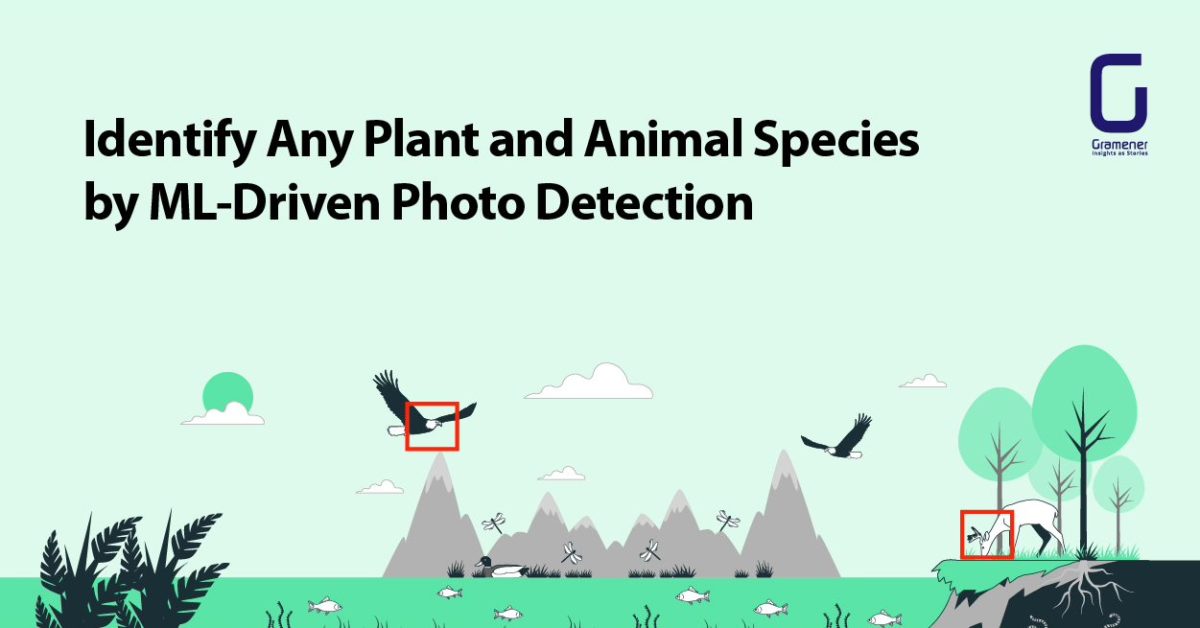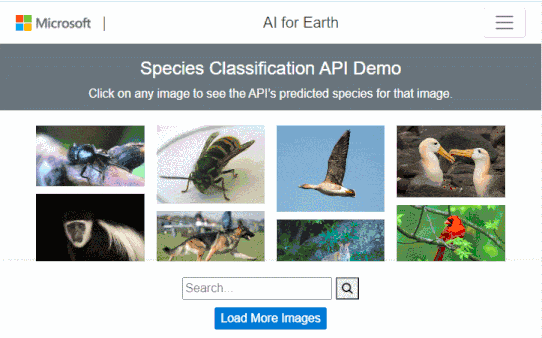Taxonomic research is an integral component of biological research. It also necessitates the accurate identification of species through efficient methods such as photos captured via camera traps. The advent of digital cameras and smart mobile devices has made it easy to gather images of varied species.
The abundance of data increases the scope for the identification of species. When combined with deep learning, the task becomes automated. It reduces the analysis time and offers better output quality than error-prone manual efforts.
Table of Contents

Why Do We Need Species Identification?
The need to identify species is vital for several reasons. Let’s look at them in detail:
Save Endangered Plants and Animals
Ecosystems comprise animals and plants species that interact with each other. This biodiversity creates savannahs and rainforests. A thriving ecosystem is made possible by the plants and animals that live in it. Any threat to this delicate balance of nature can lead to adverse consequences.
A well-balanced ecosystem can protect the environment’s health. Maintaining this balance is not easy. Species extinction can have a domino effect. Thus, the conservation of endangered species is critical for ecosystems.
A balanced ecosystem can keep its inhabitants healthy at all times. It will also ensure humans have fertile land for agriculture and access to pure water bodies and air. These are vital factors that affect the quality of life.
Repopulating Particular Species
Repopulating species is essential to prevent them from going extinct. The recovery should be up to a level where the species is below the endangered mark. Planning bodies and nonprofits can use data to determine these metrics.
ML-enabled solutions help capture and process video feeds of species to identify their count. When the species come out of the danger mark, planning bodies can delist them from the endangered species.
Counting of Different Classifications of Animal/Plant Species
We can classify living organisms into the six different categories of the animal kingdom. They are Plants, Animals. Fungi, Protista, Eubacteria, and Archaebacteria, further divided into subcategories. Identifying species thus helps the process of classification.
Habitat Restoration
Habitat loss is the primary factor behind species endangerment. It is one of the indispensable aspects of ecosystem management planning today. Thus, promoting habitats for sustainable populations is vital. Eradicating invasive species, re-establishing natural disturbance regimes, and taking care of flood cycles are a few ways to restore an ecosystem.
The successful outcome of a restored habitat includes changing the composition of species and ecological functions. Vegetation management is another vital area, although its importance ranks below the other two.
How Can You Identify Species by Photos?
Species identification by photo is one of the best options. For this, you need a database of species images from around the world. The technique uses pre-trained AI and ML algorithm models. Photos taken from cameras get compared to the image database to detect species.
One of the processes used is feature extraction which gives meaningful representations from raw data. Images contain millions of pixels of various colors.
Computing abstract features reduce the dimensionality of images and remove irrelevant information. Doing this process manually is subjective and takes a lot of time. Computer vision algorithms vastly lessen the time for object detection and image comparison.
The feature extraction output comes in like vectors, which get mapped to a confidence score through classifiers. The score then gets compared with thresholds to identify the presence of objects or their different classes, such as species names. Artificial Neuronal Network (ANN) is one of the popular classification methods.
Benefits of Identifying Species from Photos
Here are the various benefits of species identification by photo
- It helps researchers to operate from remote locations: Species identification by photo becomes possible with technology solutions even in the remotest locations. Researchers no longer have to manually click pictures of various species, which could be a laborious process. Researchers can then analyze them from anywhere and derive results.
- Improves the crowdsourced database: Crowdsourced databases often have their limitations. If you are working on a deep research-based project, you will not get everything you want from public databases.
- It helps save the species, repopulate them, and restore their habitats: Once the endangered species are identified, planning bodies can move ahead. These include planning measures to repopulate them and restore their habitat. Data is critical for these activities.
- Provide helpful information about its evolutionary history: Using species identification by photo, we can recognize rare species. Once identified, researchers can dive deep to understand their evolutionary characteristics.
- Helps in boosting ecosystem productivity: Measures like repopulating species and restoring their habitats help promote the well-being of the ecosystem. It can be converted to its original form and benefit humans.
- Enables ecological monitoring: Species identification by photo helps researchers and planning bodies monitor the ecosystem. They can keep tabs on species count and take remedial action if necessary.
From birds and insects to mammals and reptiles, check out these 8 animal identifier apps for biodiversity conservation which help in identifying species from photos. These apps use cutting-edge technology to help you identify and learn about the wildlife around you.
Reasons Leading to Biodiversity Degradation
Following are some of the factors that have led to the loss in biodiversity in recent years:
Climate Change
Climate change is significantly impacting ecosystems and their species. It leads to issues like forest fires and indiscriminate geographical distribution of species.
According to research, the climate crisis will only worsen in the coming years if there is no control on emissions. Around 50% of species will lose their natural habitat by 2100 due to greenhouse gas emissions.
Overexploitation
Endangered vertebrates are one of the biggest victims of overexploitation. Illegal wildlife trading is a big industry that poses significant risks to species conservation.
The medicine industry and trade of fur and bushmeat are some of the responsible factors. Institutions such as CITES (Convention for International Trade in Endangered Species) of Wild Fauna and Flora were established to control & prevent wildlife trade.
Invasive Species
Invasive species affect the naturally occurring species, leading to their decline and even extinction, thus negatively impacting the ecosystems. It includes plants, animals, fungi, and microorganisms that enter other habitats. They deny the native species food, water, and shelter essential for survival as they grow.
Natural Disasters
Landslides, earthquakes, bush fires, and volcanoes have a devastating impact on ecosystems. The immediate effect of these disasters is on the biodiversity of forests and wetlands.
It thus leads to the spread of invasive species and loss of habitat. The degradation of the ecosystem also affects the environment, causing climate change. This, in turn, increases the likelihood & frequency of future natural disasters.
Habitat Loss
Several factors contribute to the fragmentation of habitat and change in the climate. Habitat loss is an environmental change where a natural habitat becomes uninhabitable. It reduces biodiversity as organisms get displaced from their natural environment. Invasive species also destroy habitats.
In the past few decades, the loss of natural habitat has accelerated. Human activities related to urbanization are the primary reasons behind the loss of biodiversity and natural habitats. Mining and logging are examples of man-made factors that lead to habitat destruction.
Gramener’s Efforts To Identify Species By Photo
Gramener is actively helping global organizations leverage their tech-enabled solutions for species identification by photo. Let’s look at the different solutions:
Saving Penguins in Antarctica
The saving penguins’ project involved using a detector model for finding animals in camera-trap images. Zooniverse’s Penguin watch dataset was a critical component of this project. The dataset had 16 colonies of penguins in Antarctica.
The objective was to leverage camera trap species detection and plan conservation activities. Estimating the number of penguins from the images was another crucial task involved in the project. Microsoft’s Deep Learning ecosystem, including PyTorch and Azure platform, helped solve this problem.
Projects For Nisqually River Foundation
Gramener partnered with the Nisqually River Foundation to help them automate their fish detection process. The manual process of identifying and naming species through captured videos was resource-consuming.
We presented them with an AI-driven solution that processed and extracted relevant frames from video feeds. Deep Learning models drew bounding boxes around each fish image captured by the camera.
The workflow was part of a web app that automated input, detection, and classification. The species detection by image processing solution also included the Cognitive Services platform stack and Microsoft Azure for better efficiency.
The solution helped Nisqually River Foundation reduce 80% of its potential costs. They have also experienced a five-time decrease in manual efforts.
Gramener collaborates with Microsoft to help classify species through AI and ML algorithms. It is a Deep Learning solution built with the Microsoft AI for Earth initiative. This solution enables sustainability in decision-making through intuitive APIs and a flexible scientific environment. The solution has led to:
- 99% reduction in time for tagging images
- 100% elimination of manual data collection
- 100% frequency of data capture
- 70% increase in yield forecast visibility
- 80% accuracy of biomass detection
- 20% cost reduction
Species Detection Application
It is one of the best animal detection apps that aid biodiversity conservation with AI. Using AI and ML solutions, you can detect, monitor, and classify species. The AI and ML models help government organizations and nonprofits to classify species, detect biomass, monitor underwater environments, zoos, and wildlife centers.
Conclusion
Biodiversity conservation requires a granular approach made possible by tech-driven solutions. Species identification by photo helps solve several problems. It negates the need for manual inspection and speeds up the process. It also leads to an overall reduction in efforts and costs involved with these projects.
Using the power of AI and Machine Learning, Gramener is helping biodiversity conservation organizations.
Contact us for custom built low code data and AI solutions for your business challenges and check out ESG and AI solutions built for our clients, including Fortune 500 companies. Book a free demo right now.


